‘By linking our blends with components of the Chumash culture, I hope to emphasise the importance of balance between man and Mother Nature’Kitá Wines is a boutique winery owned and run by the Santa Ynez Band of Chumash Indians. And its head winemaker, Tara Gomez, is from the tribe.
“We are the first Native American tribe to be recognised by the California State Legislature as having a Native American winemaker, vineyard, and winery run solely by our tribe,” Tara points out.
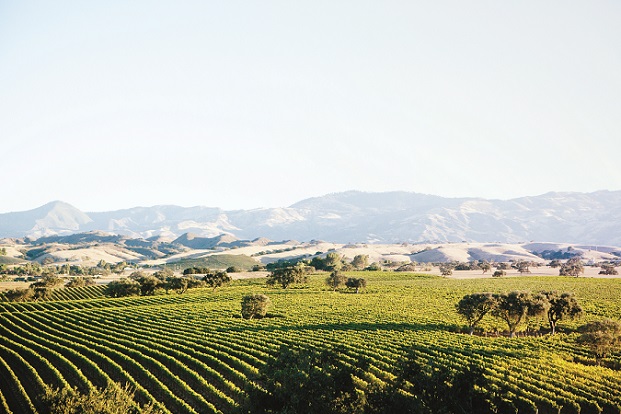
Kitá Wines was founded ten years ago when the tribe purchased the Camp 4 Vineyard (above) on the eastern edge of the Santa Ynez Valley, within the Santa Barbara County AVA. The name comes from the fact it was the fourth stagecoach stop en route from San Francisco to Yuma in the 19th century. The vineyard is home to 18 varieties, but the focus is on Rhône- and Bordeaux-style wines. Annual output is usually between 1,500 and 2,000 cases. The process places an emphasis on sustainability, which always has been core to the Chumash way. Tara explains: “It’s about finding that connection to the land, soil and climate.”
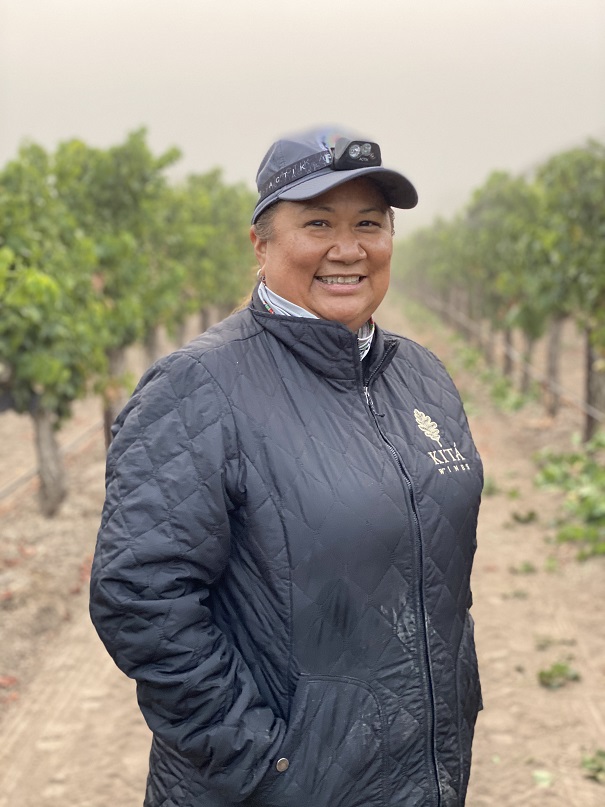
Tara (above), who has a degree in oenology, has worked in wineries in California and did two harvests at Castell d’Encus in Spain. When she returned from Spain in 2010, the tribe was in the process of purchasing about 566ha of land for housing – including about 100ha of Fess Parker vineyards. Having once been an intern at Fess Parker’s winery, Tara’s dream of one day giving back to her tribe came true when she was hired as winemaker for the tribe’s label, Kitá Wines.
Tara also recently started her own winery, Camins 2 Dreams, with her wife Mireia Taribó, a Catalonia-born winemaker. They specialise in natural wines, with Syrah and Grüner Veltliner sourced from two vineyards in the Santa Rita Hills appellation in Santa Barbara.
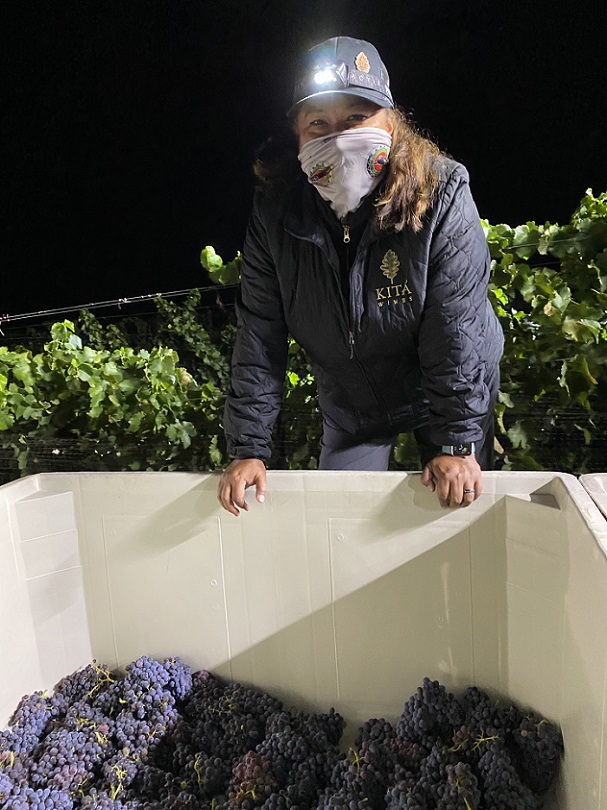
Canopy: What’s your philosophy regarding sustainability?
Tara Gomez: “Sustainability of the land has always been a part of my culture. Being indigenous, I try to find balance and connection in everything I do, while living in harmony. I believe our cultural values align with sustainability. We have always relied on our natural resources that the land gives us, and we always give back in sustainable ways for what we take from the land. We want to preserve our culture, history, and land for our future generations, and this is only possible through finding the balance between ourselves and our surroundings.”
What’s your philosophy regarding viticulture?
Tara: “In the vineyard, we refer to sustainability as finding the balance between farming practices that are respectful to the land. We rely on our natural resources that are available to us. We have perch poles for the hawks as well as bat and owl boxes to help control the rodents and insects. We have also created a pomace-to-compost program where all the MOG (material other than grapes) returns back to the land and is incorporated back into the soil, so that everything we take, we are giving back in sustainable ways.”
What’s your philosophy regarding winemaking?
Tara: “I like to think I have a similar approach to winemaking as I have to life in general. As I mentioned before, balance is key to life. It’s a balance of ourselves and our surroundings and living in harmony. We believe that wine is a balance between the soil, climate, location, and taste. In winemaking, I look for a balance of the fruit, acid, alcohol, and structure of the wine. Here at Kitá, we feel that winemaking is the heart that carries the voice of the vineyard through to the bottle.”
'Winemaking is the heart that carries the voice of the vineyard through to the bottle'What’s your style?
Tara: “The style of wine that I focus on is producing wines that are elegant, balanced, and less alcoholic. The style of wines that are a reflection of the vineyard, the soil, and its origin. Also, I like to create wines that have complexity and longer ageing potential. My approach is more classic, with minimal handling, while preserving its natural character.”
How does ‘the Chumash way’ express itself in the vineyards and winery?
Tara: “Through balance, which is a Chumash philosophy that I was raised on. Also, through finding that connection to the land and to the vines, and listening to its needs.”
How do you view the connections between the land, soil, climate and your wines?
Tara: “Through teaching the story of our culture and finding a way to connect that to the land, the vineyard, and the winery. One such story is based on the natural elements of life. For centuries, our Chumash Tribe has always maintained a level of respect for the balance between ourselves and nature, and from that, the natural elements of life – earth, water, air, and fire, which are vital elements for survival. I wanted to find a way to recognise these natural elements that are so important to our culture and winemaking. When you think about the grapegrowing process, you need ample sunlight (fire) to grow the grapes, and you need soil (earth) and water to nourish it. Air is also important in providing better circulation for temperature and humidity management around the clusters.
“I’ve created three blends that represent these natural elements: T’aya translates to ‘abalone shell’ in our native language of Samala, and it focuses on the natural element of water. This blend has that minerality and saltiness that reminds me of the ocean. Spe’y translates to flower and represents the natural element of ‘earth’. Its aromatic profile has earthy aromas and floral-rose petal and violet that best describes this wine. Then there’s Kalaš, which translates to ‘breathe’ in our native language and represents the natural element of air. Like any Bordeaux wine, you need to allow time to open up and breathe once you pop the cork. The last wine in this story is actually a sparkling wine (2016 Sparkling Roussanne) that will be released soon – Šuqštay, which means ‘it’s bright’, represents the natural element of fire with its sparkle. By linking our blends with components of the Chumash culture, I hope to emphasise the importance of balance between man and Mother Nature.”
‘I always say that I walk in beauty’Tell me about talking and listening to nature.
Tara: “It’s about connecting to the land, to the vines, and to my surroundings, and listening to what it’s telling me. I go out there in the mornings to sample and naturally find that connection to the vines. I always say that I walk in beauty, because that’s all I see around me, which is nature. I place my hands in the soil and I feel grounded. I fill my lungs with fresh air to help my mind feel clear. I raise my face to the heat of the sun to give me power to go on with the day.”
Why is the focus on Rhône- and Bordeaux-style wines?
Tara: “Because Camp 4 Vineyard sits on the eastern edge of the Santa Ynez Valley, we are able to grow both Rhône and Bordeaux varieties well based on the climate, the location, orientation, and soil. These varieties grow best for this particular region.”
What’s your twist on these wines?
Tara: “For the blends, I like to say that I tend to think outside the box and focus on varieties that you don’t see too often as being the major component of the blend. For example, Marsanne in the T’aya blend, Carignan in the Spe’y blend, which is a GSC (Grenache, Syrah, and Carignan) instead of GSM (Grenache, Syrah, Mourvedre), and Merlot based instead of Cabernet Sauvignon based in the Kalaš blend. For the non-blends, I like to think of myself as a purist, meaning all the varietals are 100% of that particular variety. I like to stay true to the variety, by representing it in the best way I can based on the soil and site.”
Tell me about the winemaking behind one of your top wines, such as Spe’y, so we get an idea of what you do that’s similar to other winemakers and what you do that’s different.
Tara: “For the Spe’y, I like to treat the wines as their individual components, and blend prior to bottling. This gives me full control of the components, which, in turn, gives me a clearer picture of each component when blending. I do my best to represent the different layers of each variety in the blend. It can have between 15-25% whole cluster based on flavour, it can have 20-30% new French oak based on structure of the wine. Because the Syrah and Carignan have more structure and flavour, Grenache is the main component of the blend, so I can highlight this less structured wine, which shows more in aromatics in this particular blend. The focus is on balance, freshness, acidity, alcohol, and structure. With this in mind, I tend to pick earlier to preserve these natural characteristics and chemistry in the wine. Ageing can be anywhere from 18-30 months, and the blend percentages vary every vintage, with Grenache always the main component of the blend.”
How did you get into winemaking when wine isn’t traditionally part of your culture?
Tara: “The love of science when growing up led me in this direction. I loved looking at nature through a microscope which grew into chemistry sets. I used to go on wine tours with my parents on weekends when we were young, and those memories connected me to winemaking. By high school, I knew this was the direction I wanted to go. A lot of people do not realise this, but chemistry is very important when it comes to winemaking.”
Has your heritage been an advantage or disadvantage?
Tara: “In my professional life it has given me some advantages because it gave me an education, which is something no-one can take from me. With the financial support of my tribe, I was able to go to college and get my degree in oenology. It has given me a platform to tell my story of my Chumash Tribe. I always try to see the positive in everything.”
How was your 2020 vintage?
Tara: “The 2020 vintage was short and sweet. It was probably the shortest harvest on record since I only brought in about of quarter of what I normally bring in due to the pandemic. I was able to cope with everything by being as transparent as I could through updates, and by keeping it real while staying true to myself. I also spent a great deal of my time connecting with my wine club members through handwritten notes, and taking the time to reach out and listen to them. They have been my biggest advocates and I truly feel blessed.”
How do you manage to run two wineries?
Tara: “When it’s something you are truly passionate about, you are able to find a way. Yes, it may be a lot of work, but I don’t necessarily see it as work when it becomes your passion. When you live and breathe it, it becomes a part of you.”
Is there anything else I should know?
Tara: “Kitá translates to ‘our valley oak’ in our native language of Samala. It represents our home and return to our historic homeland. It represents all of the valley oak trees in the vineyard, many that have existed since our ancestors’ beginnings. The oak trees represent the qualities of our tribe, and the history, heritage, and legacy of our ancestors.”
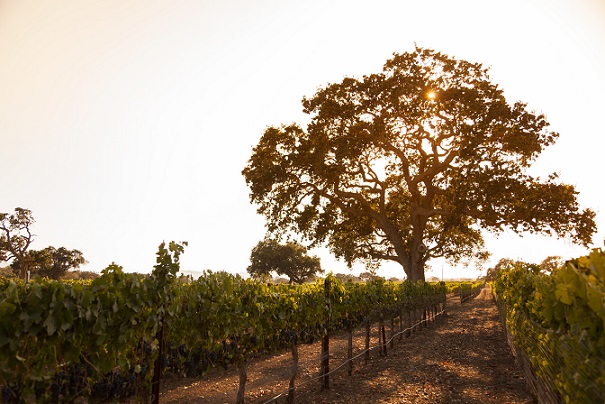

 English
English French
French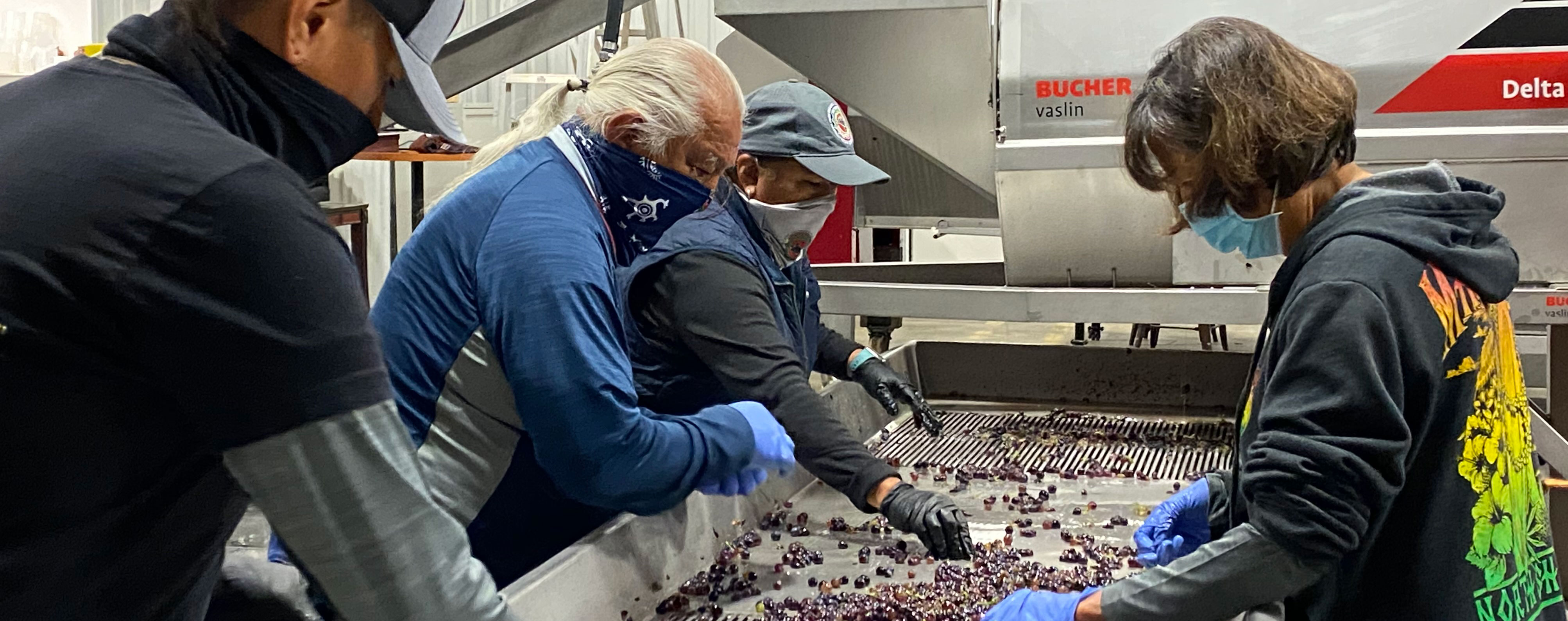




.png)
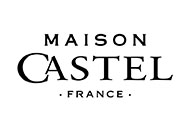



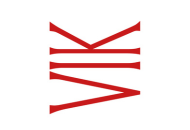


.png)
